Do you have a question about the Foxconn 915G7MC and is the answer not in the manual?
Lists the main physical and functional characteristics of the motherboard.
Illustrates and labels the physical components and connectors on the motherboard.
Instructions for installing the Central Processing Unit (CPU) onto the motherboard socket.
Guidance on installing RAM modules into the motherboard's DIMM slots.
Details on connecting the ATX power supply to the motherboard connectors.
Identifies and describes the ports available on the motherboard's rear I/O panel.
Explains various internal connectors for devices like FDD, IDE, and SATA.
Describes the PCI and PCI Express slots for adding expansion cards.
Explains the function and configuration of motherboard jumpers for system settings.
Steps to access the BIOS/CMOS setup utility upon system startup.
Overview of the primary BIOS setup screen options and navigation.
Configuration of basic system settings like date, time, and drive parameters.
Settings related to system boot behavior, protection, and performance enhancement.
Advanced settings for CPU features, boot order, and security options.
Configuration options for the motherboard chipset, memory timings, and graphics.
Settings for onboard devices like IDE, SATA, audio, and LAN controllers.
Configuration of ACPI, sleep states, and power-saving features.
Settings for Plug and Play devices and PCI slot resource allocation.
Monitoring of system temperatures, voltages, and fan speeds.
Restores BIOS settings to safe, stable defaults for system stability.
Loads BIOS settings for optimal performance, potentially impacting stability.
Setting passwords to protect BIOS access and system startup.
Options to save current BIOS settings and exit the setup utility.
Options to discard changes and exit the BIOS setup utility.
Details the software and drivers included on the motherboard's utility CD.
Guides users through the process of installing necessary motherboard drivers from the CD.
Explains how to connect and configure the 8-channel audio feature for enhanced sound.
Lists the main physical and functional characteristics of the motherboard.
Illustrates and labels the physical components and connectors on the motherboard.
Instructions for installing the Central Processing Unit (CPU) onto the motherboard socket.
Guidance on installing RAM modules into the motherboard's DIMM slots.
Details on connecting the ATX power supply to the motherboard connectors.
Identifies and describes the ports available on the motherboard's rear I/O panel.
Explains various internal connectors for devices like FDD, IDE, and SATA.
Describes the PCI and PCI Express slots for adding expansion cards.
Explains the function and configuration of motherboard jumpers for system settings.
Steps to access the BIOS/CMOS setup utility upon system startup.
Overview of the primary BIOS setup screen options and navigation.
Configuration of basic system settings like date, time, and drive parameters.
Settings related to system boot behavior, protection, and performance enhancement.
Advanced settings for CPU features, boot order, and security options.
Configuration options for the motherboard chipset, memory timings, and graphics.
Settings for onboard devices like IDE, SATA, audio, and LAN controllers.
Configuration of ACPI, sleep states, and power-saving features.
Settings for Plug and Play devices and PCI slot resource allocation.
Monitoring of system temperatures, voltages, and fan speeds.
Restores BIOS settings to safe, stable defaults for system stability.
Loads BIOS settings for optimal performance, potentially impacting stability.
Setting passwords to protect BIOS access and system startup.
Options to save current BIOS settings and exit the setup utility.
Options to discard changes and exit the BIOS setup utility.
Details the software and drivers included on the motherboard's utility CD.
Guides users through the process of installing necessary motherboard drivers from the CD.
Explains how to connect and configure the 8-channel audio feature for enhanced sound.
| Form Factor | Micro ATX |
|---|---|
| Socket Type | LGA 775 |
| Chipset | Intel 915G |
| Supported CPU | Intel Pentium 4 / Celeron D |
| Front Side Bus | 800/533 MHz |
| Memory Type | DDR |
| Number of Memory Slots | 4 |
| Memory Standard | DDR 400/333 |
| Maximum Memory Supported | 4 GB |
| PCI Express x16 Slots | 1 |
| PCI Express x1 Slots | 1 |
| PCI Slots | 2 |
| Onboard Video Chipset | Intel GMA 900 |
| Audio Chipset | Realtek ALC655 |
| LAN Chipset | Realtek RTL8100C |
| LAN Speed | 10/100Mbps |
| PS/2 | 2 |
| Serial Ports | 1 |
| Parallel Ports | 1 |
| Audio Ports | 3 |
| Audio Channels | 6 Channel |
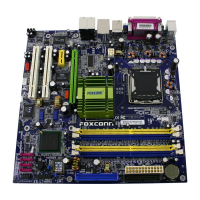
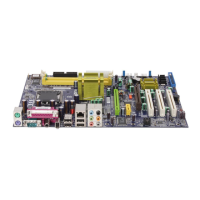

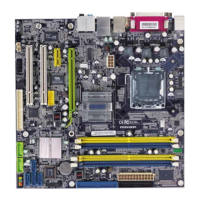

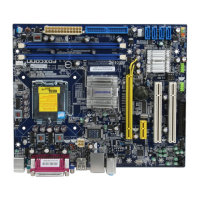
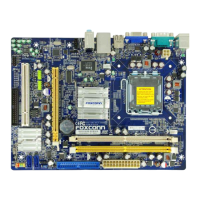
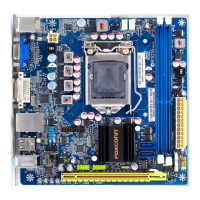
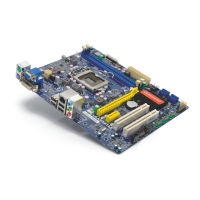
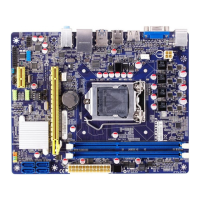
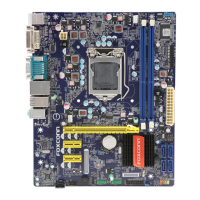

